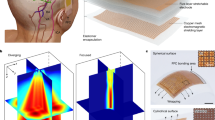Abstract
A recording of the intracavernosal pressure (ICP) in conscious rats using telemetry has the advantage of being able to evaluate erection under physiological conditions. The aim of this study was to determine whether the radiotelemetric assessment of ICP in apomorphine-induced erection is appropriate for assessing erectile function in an animal model of disease. Seven rats were assigned to the normal group, and another nine rats were assigned to the hypercholesterolemia group. A telemetric pressure sensor was implanted in the corpus cavernosum. Pressure was recorded in freely moving animals after apomorphine injection. Sexual events were visually identified and recorded. Only the pressure increase occurring during sexual behavior was analyzed. The main outcome measures were as follows: latency for first peak after injection (latency), duration, maximum ICP (Max ICP) and area under the curve (AUC). The mean latency, mean duration of each episode, mean Max ICP, mean AUC and mean summed AUC were 389.9±59.4 s, 61.6±7.8 s, 140.0±22.5 mm Hg, 1834.4±358.2 mm Hg s and 3259.1±795.9 mm Hg s, respectively, for the normal group vs 652.8±102.2 s, 32.4±5.2 s, 92.7±6.4 mm Hg, 572.9±73.6 mm Hg s and 739.9±87.2 mm Hg s, respectively, for the hypercholesterolemia group. There was a significant difference in mean latency, mean AUC and mean summed AUC. Additionally, we cannot find any obvious immediate adverse events after surgical implantation in both normal control and hypercholesterolemic rats. And, no catheter displacement and no adverse local reaction, including fibrosis to the implant, were observed. In conclusion, radiotelemetric assessment of ICP in apomorphine-induced erection provided consistent and accurate data during erectile events, and was appropriate for assessing erectile function in an animal model of disease.
This is a preview of subscription content, access via your institution
Access options
Subscribe to this journal
Receive 8 print issues and online access
$259.00 per year
only $32.38 per issue
Buy this article
- Purchase on Springer Link
- Instant access to full article PDF
Prices may be subject to local taxes which are calculated during checkout


Similar content being viewed by others
References
Schill W-B, Comhaire FH, Hargreave TB . Andrology for the Clinician. Springer, 2006 p 282.
Giuliano F, Bernabe J, Rampin O, Courtois F, Benoit G, Rousseau JP . Telemetric monitoring of intracavernous pressure in freely moving rats during copulation. J Urol 1994; 152: 1271–1274.
Bernabe J, Rampin O, Sachs BD, Giuliano F . Intracavernous pressure during erection in rats: an integrative approach based on telemetric recording. Am J Physiol 1999; 276 (2 Pt 2): R441–R449.
Giuliano F, Rossler AS, Clement P, Droupy S, Alexandre L, Bernabe J . The use of telemetry technology to test the proerectile effect of melanotan-II (MT-II) in conscious rats. Eur Urol 2005; 48: 145–151.
Sachs BD, Akasofu K, Citron JH, Daniels SB, Natoli JH . Noncontact stimulation from estrous females evokes penile erection in rats. Physiol Behav 1994; 55: 1073–1079.
Shamloul R . Telemetric intracavernosal and intraspongiosal pressure monitoring. J Sex Med 2008; 5: 2246–2252.
Soukhova-O'Hare GK, Schmidt MH, Nozdrachev AD, Gozal D . A novel mouse model for assessment of male sexual function. Physiol Behav 2007; 91: 535–543.
Paick JS, Lee SW . The neural mechanism of apomorphine-induced erection: an experimental study by comparison with electrostimulation-induced erection in the rat model. J Urol 1994; 152 (6 Pt 1): 2125–2128.
Elabbady A, Hassouna MM, Elhilali M . Apomorphine versus mating behavior in testing erectile capabilities of diabetic rats. Urology 1995; 45: 715–719.
Acknowledgements
This study was supported by a grant from the Korean Health Technology R&D Project, the Ministry for Health, Welfare and Family Affairs, the Republic of Korea (A111535).
Author information
Authors and Affiliations
Corresponding author
Ethics declarations
Competing interests
The authors declare no conflict of interest.
Rights and permissions
About this article
Cite this article
Lee, J., Ko, M., Chae, M. et al. Radiotelemetric assessment of intracavernosal pressure in apomorphine-induced erection: hypercholesterolemic rats vs normal control. Int J Impot Res 26, 41–44 (2014). https://doi.org/10.1038/ijir.2013.32
Received:
Revised:
Accepted:
Published:
Issue Date:
DOI: https://doi.org/10.1038/ijir.2013.32



